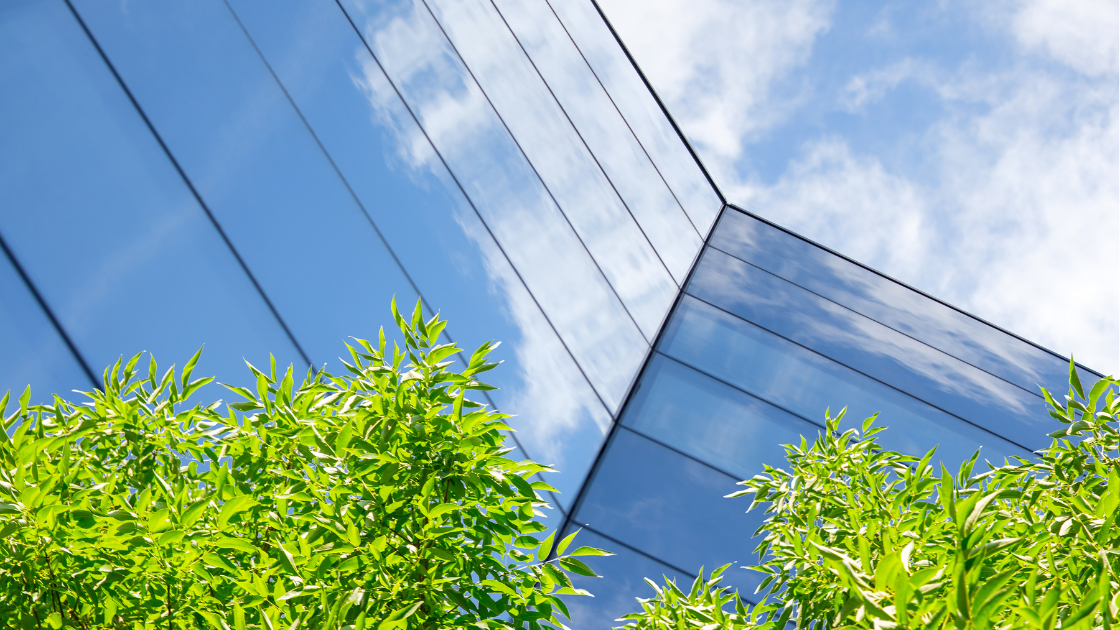Are Green Buildings Really Profitable?
There are two ways to make your building green.
The first is incorporating green building operations and green building systems, directly into your building’s design and build; this would apply in the case of new constructions.
Today, many new constructions are built with the environment in mind, but not all are built as green buildings.
The second is retrofitting an existing property to make it green. This applies to business or property owners and applies to most people today.
Over 90% of buildings in the U.S. will require renovations and adjustments to bring them up to green building standards.
Chances are, if you’re reading this blog, you’re looking at how to retrofit your building to turn it into a green building. Most importantly, you want to make sure that the investment needed to make your building green, will in turn pay itself off.
Whether you are building new construction or retrofitting an existing property, walking that “extra mile” to make your building environmentally friendly requires an investment.
A green building can help improve operations and save money through energy efficiency and lower operating costs. But is that enough to cover the costs needed to make a building green?
The short answer is yes, over time green buildings have proven to help save sufficient funds by means of energy, water, and trash, to turn ROI within 7-10 years. However, there is another aspect of ROI that can now be considered in addition to savings realized.
Research recently done into the impact a green building has on customers shows that sustainable properties earn higher ROI.
How So?
Growing awareness of the negative impacts that energy, transport, trash, and water has on our environment, has resulted in customers appreciating and putting a higher value on businesses and commercial properties that have incorporated green building measures.
The same research shows that the value people put on green buildings will grow in favor of environmentally friendly buildings and businesses, as general awareness and participation in green measures increases.

A local sustainable coffee shop will attract the attention of customers more than nationwide coffee chains that do not promote the environment, providing their coffee is decent of course. A green apartment building will be in higher demand than one that did not take the environment into consideration and so on.
“The report reveals that 81% of people prefer to buy from sustainable sellers. An independent study commissioned by SmartestEnergy reveals that consumers are increasingly favoring brands with a commitment to environmental sustainability.”
How Sustainable Real Estate Reduces Risk
As awareness of our environment increases and more efforts are put in place to slow global warming, buildings have entered the spotlight as a way to contribute to climate change.
The largest source of carbon emissions comes from energy production. For a long time, efforts have been solely aimed at finding cleaner ways to produce energy to try and resolve climate change issues. While that will continue, a lot of efforts are now also being aimed at creating green and sustainable buildings to reduce the overall demand for energy as a secondary approach.
Roughly two-thirds of carbon emissions are generated in urban areas, and forty percent of these emissions come from buildings.
According to Cervest, a platform that tracks climate change through artificial intelligence, 88% of large companies have had assets affected by extreme weather. In turn, damaged assets has lead to increased operating costs.
Another report from the Urban Land Institute, a real estate investment company, warns that “failure to address and mitigate climate risks may result in increased exposure to loss as a result of assets suffering from reduced liquidity and lower income, which will negatively affect investment returns.”
To put this in perspective, the real estate sector totals $200 trillion in nationwide wealth, which accounts for 60% of the national, corporate, and individual wealth in the U.S.
To address buildings’ contribution to climate change, some states have begun to enforce regulations aimed to lower their energy use intensity (EUI) and GHG emissions.
* California adopted its CalGreen Building Code in 2009 which has a minimum energy efficiency standard which new buildings must meet.
* New York, through Local Law 95 and 97, grades larger buildings on their energy efficiency and sets emissions limits backed up by fines
By making improvements ahead of regulations, building owners in other states may benefit from tax incentives and higher ratings, as well.
Many property buyers and renters not only prefer green buildings as a healthier, low-risk choice, they’re also willing to pay more for this value.
Green Building Strategies to improve ROI
Green building certifications
Similar to an organic food label, green building certifications are a convenient way to demonstrate a building’s green attributes. A third-party rating system offers a trusted verification for the environmental value a building offers. Here are some of the most widely recognized green building certificates:
- Leadership in Energy and Environmental Design (LEED)
- Building Research Establishment Environmental Assessment Method (BREEM)
- ENERGY STAR for buildings
Heat pumps
Air-source heat pumps, which use electricity to provide both heating and cooling, are on average 50% more energy efficient than furnaces or baseboard heating systems, according to the Department of Energy (DOE). While this technology is not new, recent advances have made air-source heat pumps suitable for use in areas with sub-freezing temperatures. Heat pump water heaters are also increasingly cost-effective against gas or electric resistance water heaters.
Heat pumps can significantly reduce a building’s carbon footprint versus gas-powered furnaces, particularly when drawing from a clean energy source. Gas-powered furnaces emit most of their CO2 from burning fuel, but heat pumps don’t burn fuel to create heat, they move heat from outside to inside. Gas furnaces also leak unburned methane during fire-ups, in addition to leaks along the pipeline; this is particularly detrimental to the environment, as methane heats the atmosphere 80 times more than carbon dioxide (CO2).
Even if they don’t rely on renewable energy sources, heat pumps will still significantly reduce building greenhouse gas emissions, thanks to their efficiency, which can translate into energy bill savings of 20-70%.
Renewable energy
As large-scale solar and wind projects expand, more areas have access to renewable energy. However, renewable energy still only accounts for a fraction of the available supply from utilities.
Building owners can opt to produce their own renewable energy by installing a roof-top solar system, taking advantage of local and federal tax credits to reduce upfront cost. As a distributed generation energy source, a PV system can also earn credits for any energy it supplies to the grid, because most states offer a net-metering tariff rate.
On-site renewable energy has additional benefits as well. Systems with microgrid inverters can act as a back-up energy source in the event of blackouts. Building operators can also minimize a building’s emissions and negative health impacts by pairing renewable energy with all-electric appliances and HVAC units.
Insulation, window glazing, sun shading, and cool roofs
Protecting a building from the variance of external temperature is hugely important for reducing the energy a building uses. A wide range of building improvement strategies are available to minimize these impacts.
By optimizing a building’s wall insulation, adding reflective window glazing onto window surfaces, shading windows and roofs from the sun, and using rooftop building materials that have reflective surfaces property owners can reduce heat absorption from sunlight in summer and improve heat retention in winter.
LED Lights and energy efficient appliances
Choosing appliances with high ENERGY STAR ratings and swapping light fixtures with LEDs can instantly reduce the energy your building uses.
Smart thermostats and sensors
Energy inefficiencies also arise from building operations, so installing smart thermostat and sensor technologies to limit energy use by gating temperatures at a certain level or automatically switching off lights and appliances after periods of inactivity can greatly cut down on excess energy use.
At Bio Developing, our experts can walk you through different options for making a building green and ways to best benefit from environmentally friendly building systems.


Recent Comments